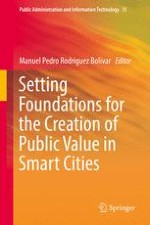2019 | OriginalPaper | Chapter
6. Towards a Smart Destination Development Model: Promoting Environmental, Economic, Socio-Cultural and Political Values
Authors : Mariana Brandão, Luiz Antonio Joia, Gabriel Marcuzzo do Canto Cavalheiro
Published in: Setting Foundations for the Creation of Public Value in Smart Cities
Publisher: Springer International Publishing
Activate our intelligent search to find suitable subject content or patents.
Select sections of text to find matching patents with Artificial Intelligence. powered by
Select sections of text to find additional relevant content using AI-assisted search. powered by
